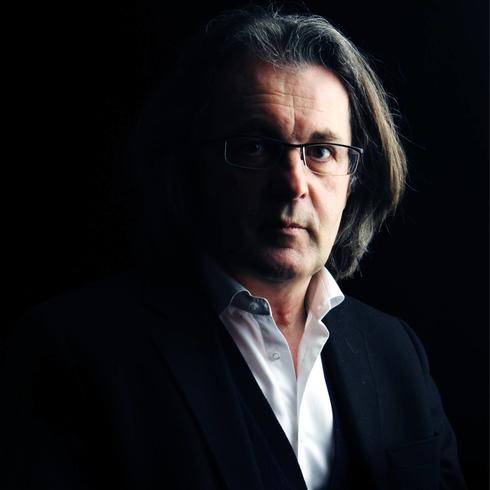Those Two stand for turmoil, aberration, violence, utter chaos. From dusk to dark, their story unfolds in a shadowy atmosphere where everything is murky, opaque, bleak and cruel. The Weird Sisters repeat along with Him: “Beau est noir et noir est beau” (Beautiful is dark and dark is beautiful). They are the oracle, a sort of three-headed devil, but they are faeries, too. The Two are possessed by insane demons, haunting them like burning fires, left to their frightful fears. They no longer know what they have done, but must do it. Everything happens as if they had to repeat or replay it. It’s more than they can resist. Together, they confuse everything: semblance and reality, before and after. They hear voices. They no longer know what is happening, something From Elsewhere traverses them; their vision is blurred; their senses are exacerbated, bloated like avid Gorgons. Their eyes are open inside them, petrifying them, while He must kill him, the King. In fact, no one remembers really why: to become King, of course — that is easy to understand — but at the same time, he has visions. The dagger floats and hovers in front of him like a slow bird in flight. It’s a mirage. She is the one who wants that: to kill the King, that good King, she transgresses all that happens; she understands nothing of herself: it’s sheer confusion; she inverts everything and the Other kills the King because he believes that is what he, too, wants. He stops thinking; he is a fake strongman; he is weak. When it’s over, he remembers nothing; he hallucinates. All of a sudden, he kills everything around him; it’s irresistible: he cannot stop. Then he is frightened, constantly fearful, fragile, almost oversensitive. He falls apart and, suddenly, she, too, dies and everything degenerates and becomes loathsome inside him. In the end, he knows: it is too late and everything is over.
When I began thinking of an opera on this accursed text, I found myself a little like Her and Him: lost, frightened, anxious — true, without the murder, but still, pursued by quite a stench of death. I imagined frightening myself. Why did I have to write that? Yet another story with a tragic ending. But I couldn’t resist. I had not yet finished my previous opera — where the woman flays her man before devouring him with her red open mouth, displaying sharp teeth — when I realised that I had to go even further in horror. So, now I’ve done just that. Fortunately, none of this is true. It’s an opera, like so many operas: brimming with dread, alarm, fragile, even funny as the singing never stops.
With an opera, I’m not trying to tell a story, but rather to portray a world as I understand it, as it passes before my own eyes. It’s not a matter of telling a story, but rather of creating more stories within the opera. Each opera bears its own burden, anxiety and indescribable distress. It comes out of the blue. The text appears of its own volition, standing there facing you; it’s crazy, it’s like speaking to oneself. First, it sizes you up balefully for some time — a long time — ruminating within you, before constraining you. Then, you have to Say That with music, through music because that’s how you create an opera.
The permanency of Those Two’s story has never stopped weighing on our time. It’s even astounding how modern it is. It’s a question, while also being a metaphor, and vice versa. Opera means singing what is of concern to us together. So, I read and reread that play, whose name we do not pronounce, all the translations (something everyone has been doing for a long time), I watched the films (and there are many), the plays (even more, with each individual having their own idea on the issue), I’ve read what has been written about it, in every way (it’s full of underground passages, underbrush, always dark so you can’t see anything). The text made me feel exhausted, overwhelmed, lost. When I was completely submerged, having reached the very bottom, I asked Frédéric Boyer if we could work on it together. I had no choice but to take him on in this adventure. So, he reread everything, too, then rewrote it all. That’s how it happened: one word at a time, one note at a time.
Pascal Dusapin / 28 July 2018


